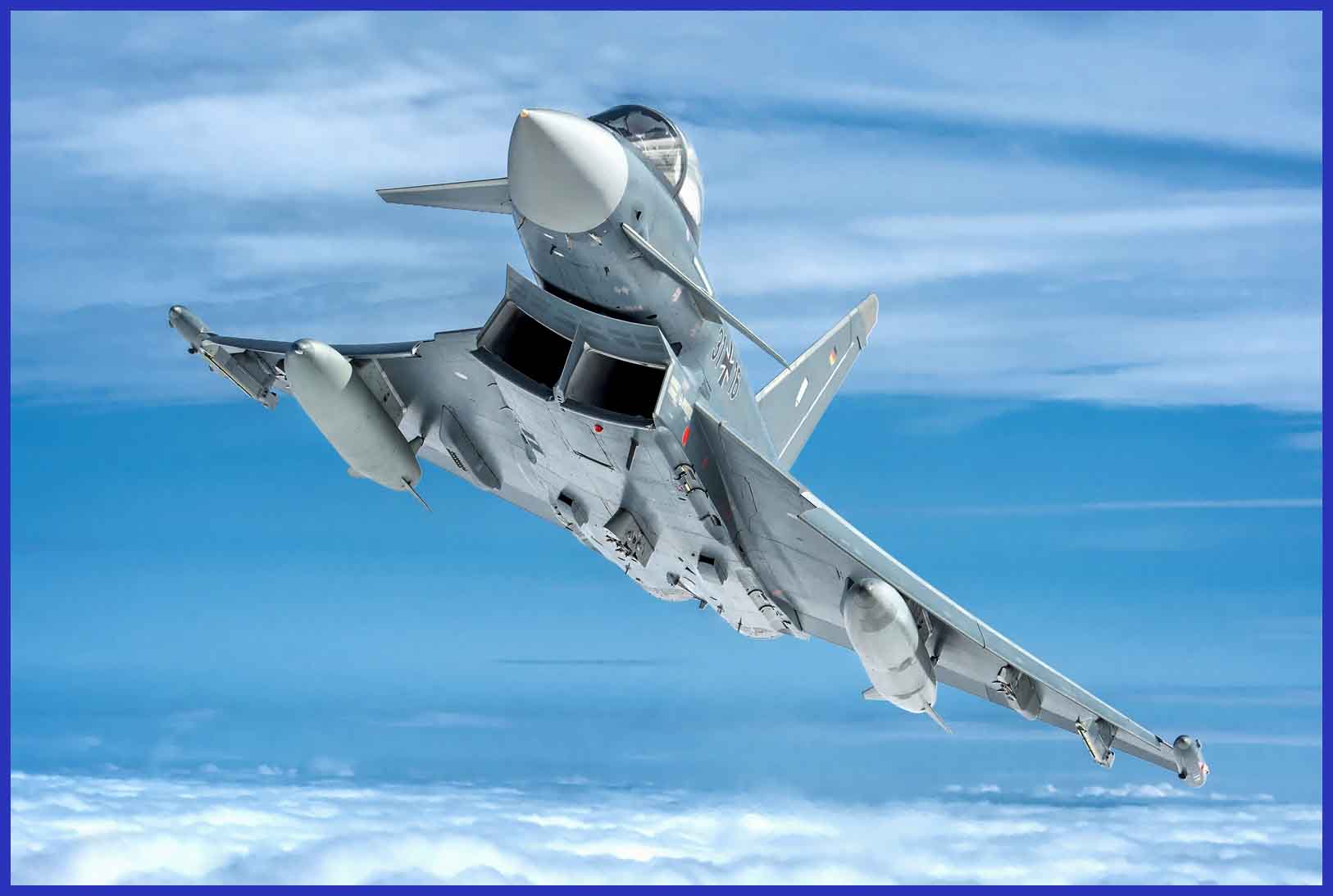The Eurofighter Typhoon has gained global recognition as one of the most formidable aircraft in modern aviation. Exploring the Best Details of the Eurofighter Typhoon, a cutting-edge multirole fighter aircraft renowned for its exceptional performance and advanced features.
Among its standout features is a sophisticated aerodynamic design, characteristic of this European multinational twin-engine, canard delta wing, multirole fighter, designed to ensure high agility and manoeuvrability.
Equipped with state-of-the-art avionics, it boasts a powerful radar system, the CAPTOR-E AESA radar, capable of simultaneously tracking multiple targets with precision.
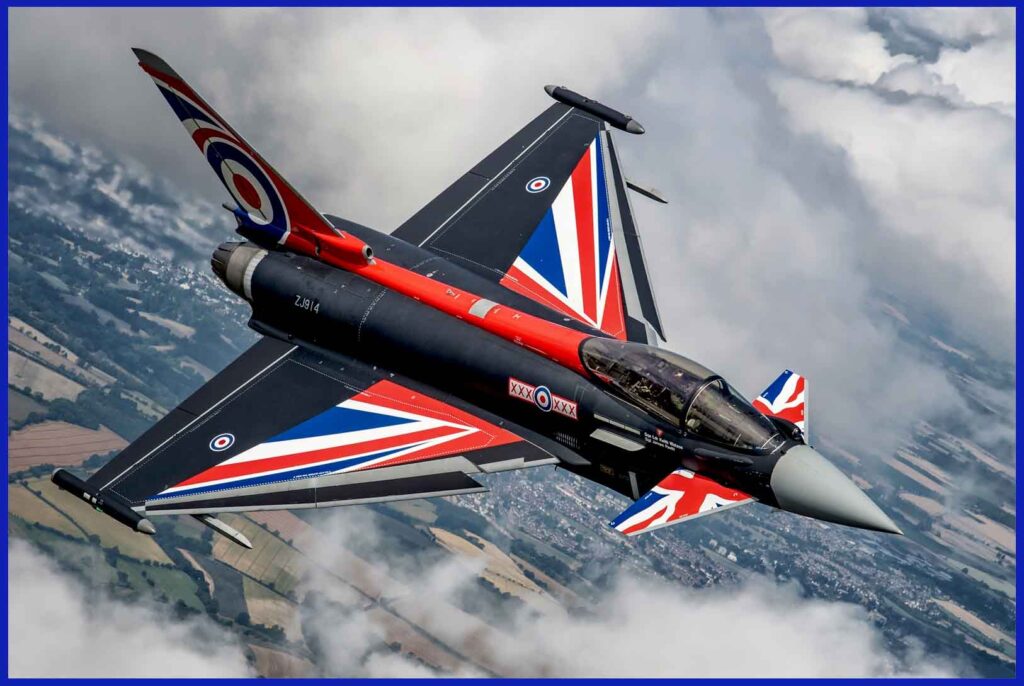
The Eurofighter Typhoon is propelled by two Eurojet EJ200 engines, delivering impressive thrust and speed. It achieves supersonic velocities without requiring afterburners (supercruise), resulting in fuel efficiency and an extended operational range.
With a comprehensive armament system encompassing air-to-air and air-to-ground capabilities, it excels in diverse mission profiles, spanning air superiority to ground attack.
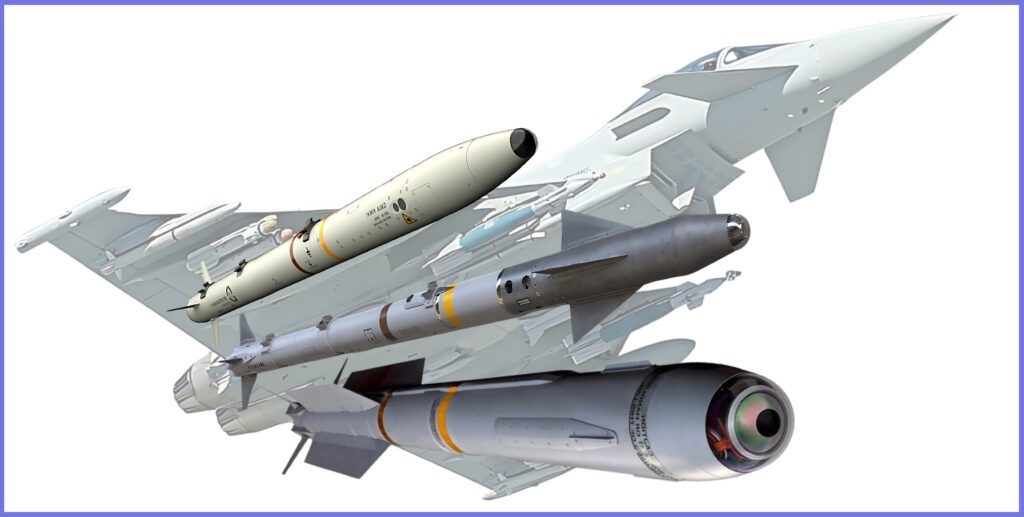
The Typhoon is manufactured by a consortium composed of Airbus, BAE Systems, and Leonardo, which collectively manage the project through a joint holding company known as Eurofighter GmbH.
This formidable aircraft commenced operational service in 2003 and currently serves in the air forces of Austria, Italy, Germany, the United Kingdom, Spain, Saudi Arabia, and Oman. Additionally, Kuwait and Qatar have placed orders for the aircraft, bringing the total procurement count to 680+ approximately as of 2023.

Furthermore, the Typhoon provides exceptional situational awareness through its advanced cockpit and Human Machine Interface (HMI), enhancing pilot effectiveness and mission accomplishment. Additionally, this highly agile aircraft is purposefully designed to excel in dogfights during combat scenarios.
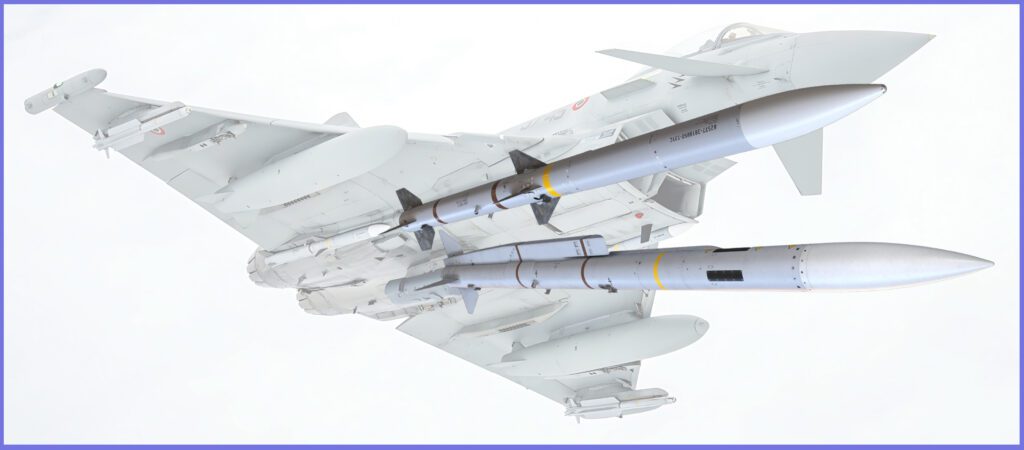
Subsequently, later production models have been continuously enhanced to expand their capabilities, enabling them to excel in air-to-surface strike missions and accommodate an increasing variety of armaments and equipment, including Storm Shadow, Brimstone, and Marte ER missiles.
In summary, the Eurofighter Typhoon stands as a versatile and high-performance aircraft, occupying a prominent position in modern aerial combat technology.

The Development Story of the Eurofighter Typhoon
In the early 1980s, European nations, including the United Kingdom, Germany, Italy, and Spain, identified the necessity for a modern fighter to replace their ageing aircraft fleets. The concept of a collaborative effort emerged, aiming to create a high-performance aircraft capable of meeting the diverse operational requirements of these nations.
In early 1979, German Messerschmitt-Bölkow-Blohm (MBB) and British Aerospace (BAe) jointly presented a formal proposal to their respective governments for a collaborative project, known as the European Collaborative Fighter (ECF) or European Combat Fighter.

In the same year, in October 1979, the French company Dassault also joined the ECF project. However, the development of three distinct prototypes continued: MBB continued refining its TKF-90 concept, while Dassault produced a design called the ACX.
Nevertheless, the ECF project faced multiple challenges and ultimately collapsed in 1981 due to various factors, including differing requirements and Dassault’s insistence on ‘design leadership’.
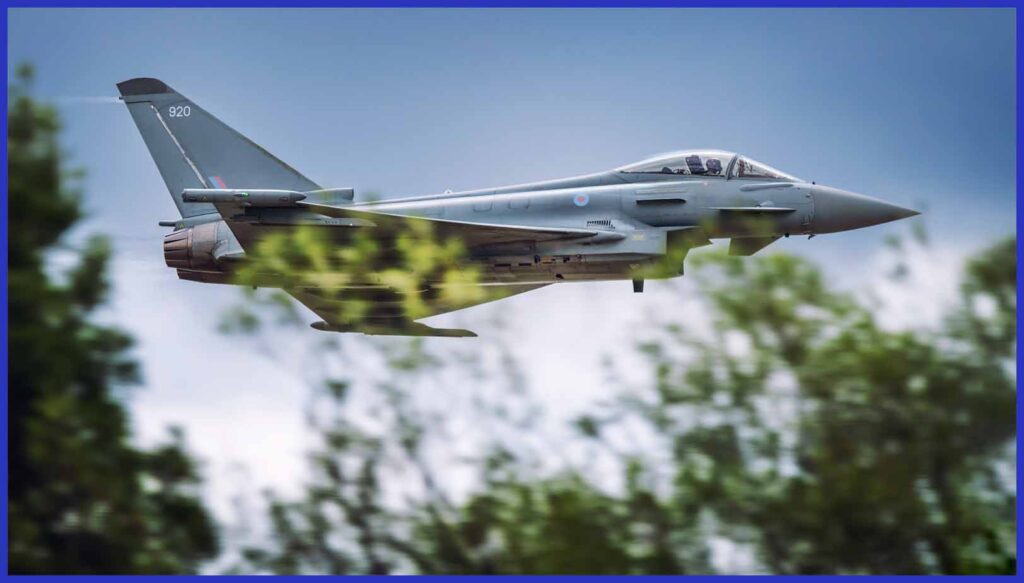
In 1983, a collaborative effort involving Italy, Germany, France, the UK, and Spain was launched, named the ‘Future European Fighter Aircraft’ (FEFA) program. This program aimed to develop an aircraft with short takeoff and landing (STOL) capabilities and beyond visual range (BVR) missile capabilities.
By 1984, France expressed its interest in a carrier-capable version and a leading role in the project, leading Italy, West Germany, and the UK to withdraw and establish a separate EFA program.
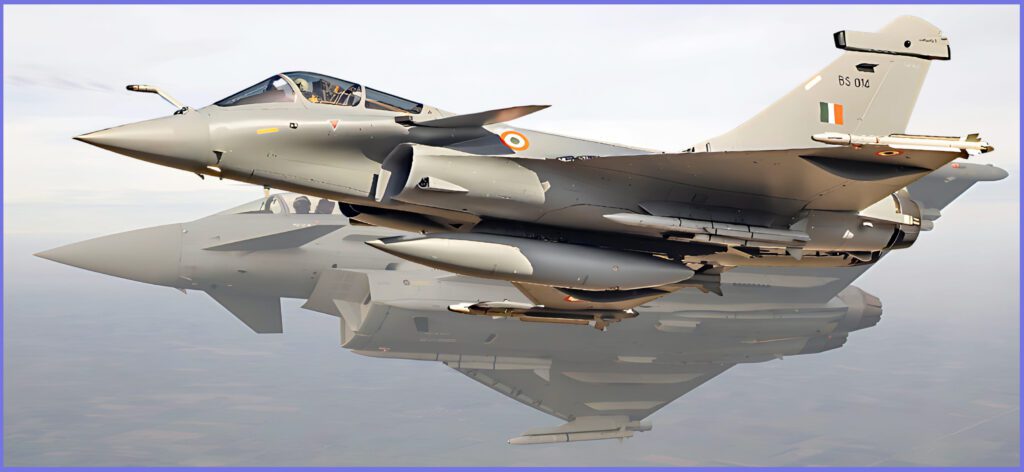
On August 2, 1985, an agreement was reached in Turin involving West Germany, the UK, and Italy to proceed with the Eurofighter EFA. It was confirmed that France, along with Spain, had opted out of the project. Spain later re-joined the Eurofighter project in early September 1985.
Consequently, France officially withdrew from the project to pursue its own ACX project, which ultimately resulted in the development of the Dassault Rafale. The EFA program evolved into what is now known as the Eurofighter aircraft.
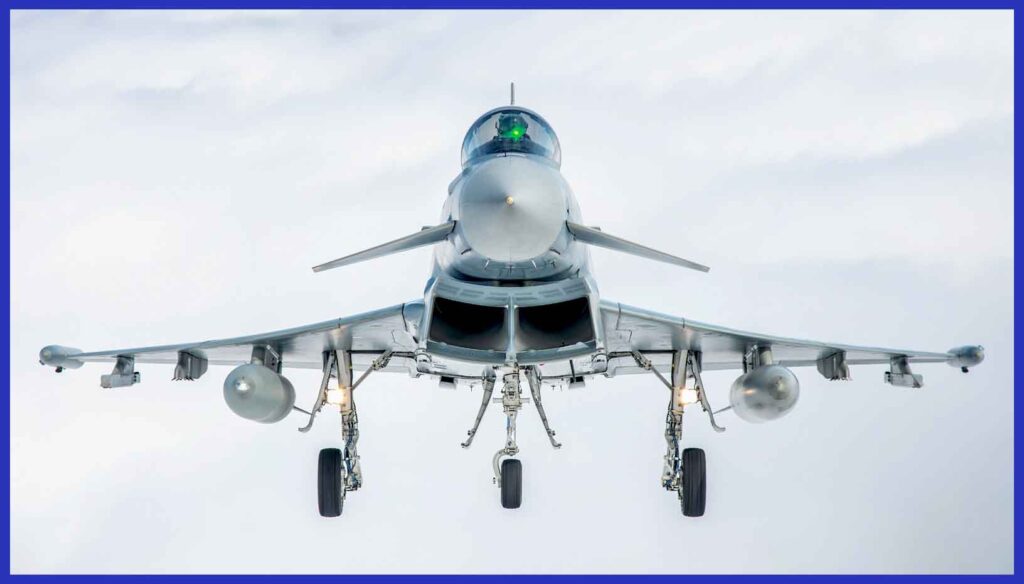
The inaugural flight of the Eurofighter prototype occurred in Bavaria on March 27, 1994, with DASA’s chief test pilot, Peter Weger, at the controls. The aircraft was officially named Typhoon in September 1998, and the first production contracts were signed the same year.
The Typhoon became operational in 2003 and is currently in active service with the air forces of several nations, including Austria, Italy, Germany, the United Kingdom, Spain, Saudi Arabia, Oman, Kuwait, and Qatar.
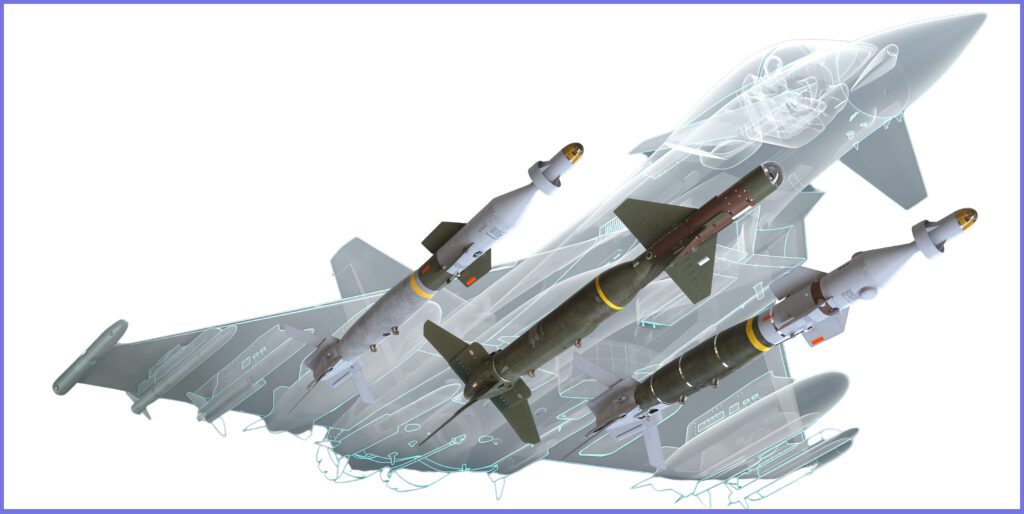
Dissecting the Design of the Eurofighter Typhoon
The Eurofighter Typhoon’s design is a result of careful consideration of various factors, including aerodynamics, versatility, and technological innovation. Here’s a breakdown of its key design elements:

Delta Wing Configuration: The Eurofighter Typhoon showcases a delta wing design, known for its ability to deliver exceptional manoeuvrability and agility, whether at supersonic or low speeds. This wing configuration ensures stability during flight, a crucial asset for air-to-air combat and ground attack missions.
To maintain this stability, the aircraft is equipped with a quadruplex digital fly-by-wire control system, which provides artificial stability. Manual operation alone would be insufficient to counter the inherent instability of the delta wing design.

This fly-by-wire system is often described as ‘carefree’ since it prevents the pilot from exceeding the permitted manoeuvring limits.
Canard Wings: The Eurofighter Typhoon includes canard wings, which are small wings situated near the front of the aircraft. These canards play a crucial role in enhancing lift and manoeuvrability. They significantly contribute to the aircraft’s capability to execute tight turns and maintain control, even in demanding situations.
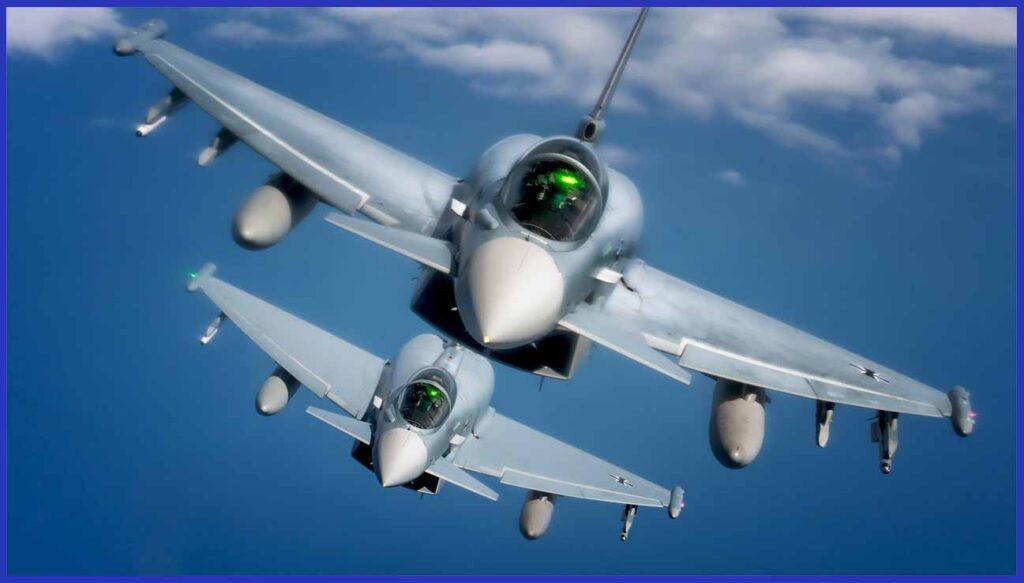
Advanced Avionics: It has a CAPTOR-E radar, an advanced electronically scanned array (AESA) radar. This radar’s greater target identification and tracking skills give the pilot better situational awareness.
The aircraft uses the Praetorian Defensive Aids Sub-System, a highly developed and integrated system that detects and reacts automatically to air and surface threats, offers an overall priority evaluation, and can respond to numerous threats at once.
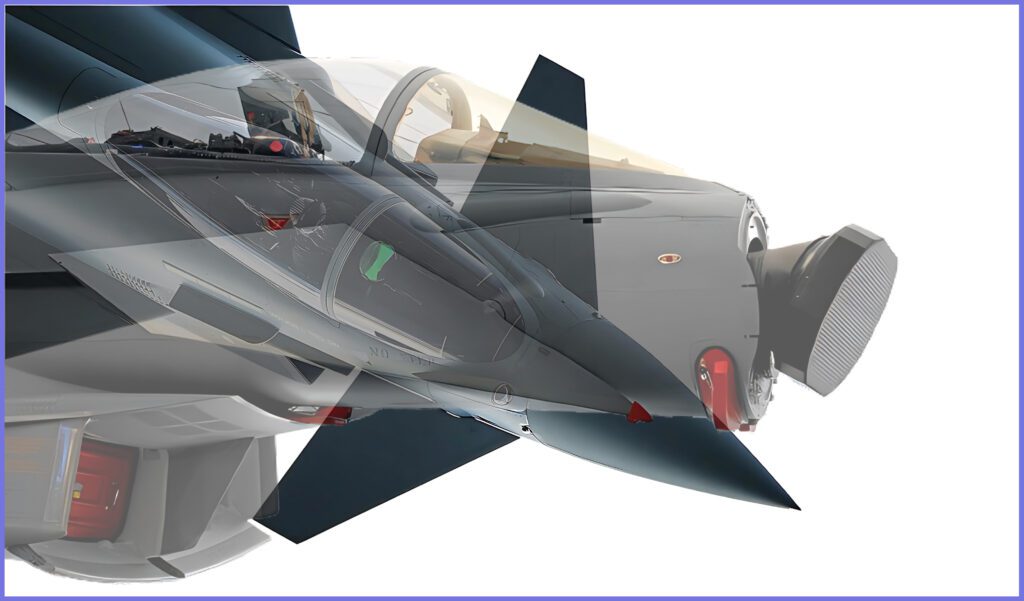
A laser warning receiver (LWR, only on UK typhoons), a missile warning system (MWS), and a radar warning receiver (RWR) are examples of threat detection technologies.
Chaff, flares, an electronic countermeasures suite, and a towed radar decoy (TRD) are examples of protective countermeasures. 16 antenna array assemblies and 10 radomes make up the ESM-ECM and MWS.
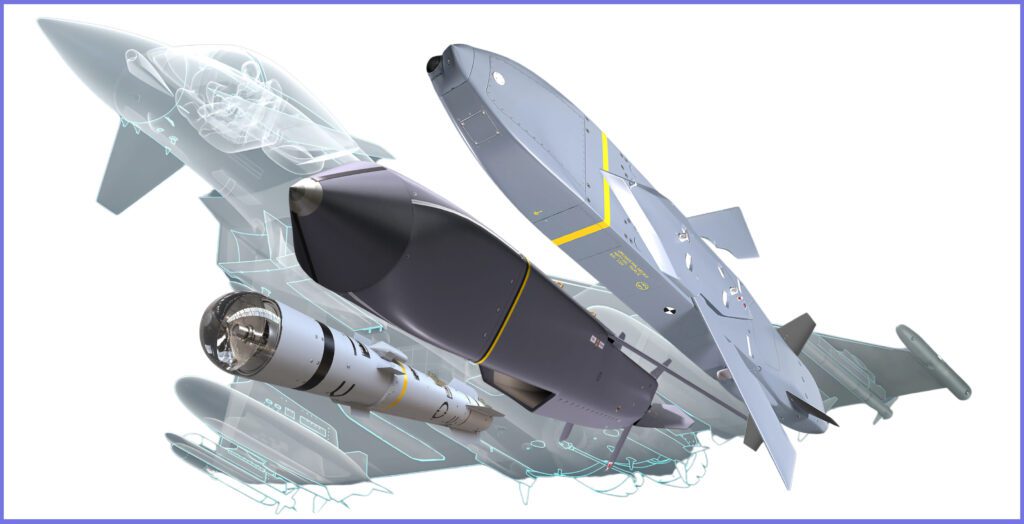
During the two-week Babel Fish III testing in the Mojave Desert in 2017, an RAF Eurofighter Typhoon used its Multifunction Advanced Data Link (MADL) to demonstrate interoperability with the F-35.
This was made possible by converting the MADL communications into Link 16 format, enabling direct communication between an F-35 in stealth mode and the Typhoon.
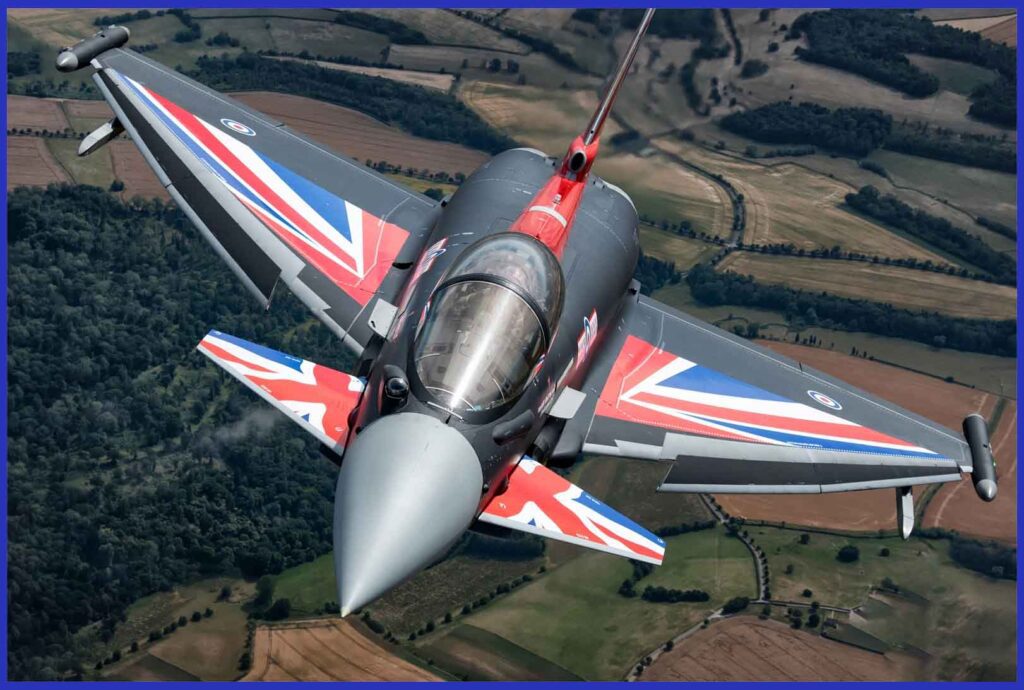
Smart Cockpit with Helmet-Mounted Display: User requirements played a pivotal role in the cockpit’s design, with a strong emphasis on both layout and functionality. The development process incorporated feedback and evaluations from military pilots and a specialized testing facility.
The Typhoon is equipped with a modern glass cockpit, devoid of traditional instruments.
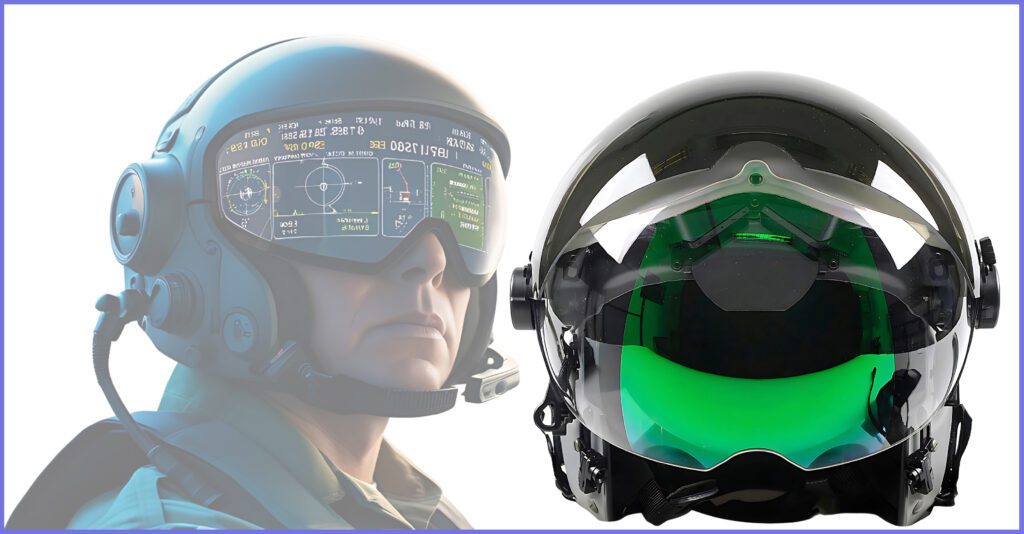
It features three full-colour multi-function head-down displays (MHDDs), a wide-angle head-up display (HUD) equipped with forward-looking infrared (FLIR) capability, a voice-activated hands-on throttle and stick (Voice+HOTAS) system, a Helmet Mounted Symbology System (HMSS), a Multifunctional Information Distribution System (MIDS), a manual data-entry facility (MDEF) located on the left glare shield, and a fully integrated aircraft warning system complete with a dedicated warnings panel (DWP).

The aircraft is operated using a centre stick (or control stick) and left-hand throttles, designed based on the Hand on Throttle and Stick (HOTAS) principle to reduce pilot workload. For emergency situations, the aircraft is equipped with a Martin-Baker Mk.16A ejection seat, and the canopy can be jettisoned using two rocket motors.
Inside the Typhoon’s cockpit, there is a helmet-mounted display system that enables the pilot to view critical flight and targeting information directly on their helmet visor, enhancing their ability to engage targets effectively.

Eurojet EJ200 Engines: The Eurofighter Typhoon is equipped with two Eurojet EJ200 engines, delivering exceptional thrust and acceleration capabilities. These engines are meticulously engineered for both high performance and fuel efficiency, each capable of providing up to 60 kN of dry thrust and over 90 kN with afterburners engaged.
When in ‘war’ mode, dry thrust increases by 15% to 69 kN per engine, while afterburners deliver 5% more power, reaching 95 kN per engine. For brief moments, the engines can safely sustain up to 102 kN of thrust without causing damage to prevent critical situations.
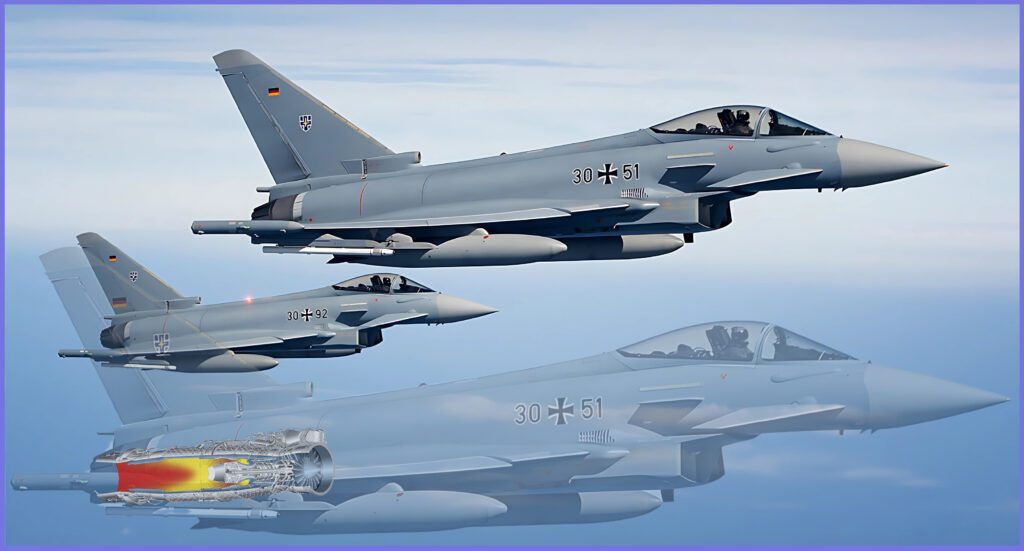
The Typhoon is capable of achieving supersonic cruise speeds without the need for afterburners. These engines incorporate cutting-edge technologies from each of the four European companies involved, featuring advanced digital control and health monitoring, wide chord aerofoils, single crystal turbine blades, and a convergent/divergent exhaust nozzle.
This combination results in a high thrust-to-weight ratio, versatile multi-mission capabilities, supercruise performance, low fuel consumption, cost-effective ownership, modular construction, and room for future growth.

Versatile Weapon System for Multirole Capabilities: The Eurofighter Typhoon is equipped with a diverse selection of air-to-air and air-to-ground weaponry, endowing it with the capability to excel in a wide range of mission profiles, spanning from air superiority to ground attack.
Notably, between 2015 and 2017, Phase 2/3 weapons enhancements were undertaken, culminating in the successful integration of Storm Shadow and Taurus KEPD 350 cruise missiles.
During the same period, the integration of the Meteor Beyond Visual Range Air-to-Air missile was also accomplished. Additionally, a significant milestone was achieved with the first live firing of MBDA’s Brimstone air-to-surface missile, marking a pivotal achievement within the Phase 3 Enhancements (P3E) program.
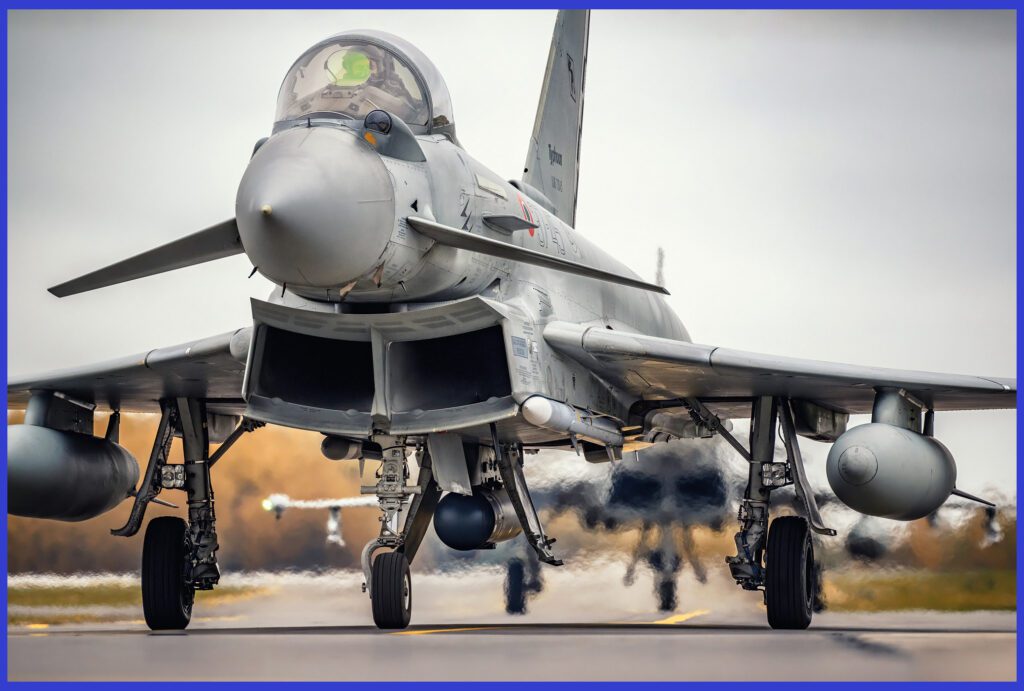
For anti-ship capabilities, the Eurofighter Typhoon offers a range of options, including weapons such as the Boeing Harpoon, MBDA Marte, and RBS-15 Gungnir. These capabilities are accessible for both the aircraft’s own use and for potential export to customers.
The Eurofighter Typhoon is designed with adaptability in mind, allowing it to swiftly reconfigure its payload and equipment to meet diverse mission requirements, further enhancing its multirole capabilities.
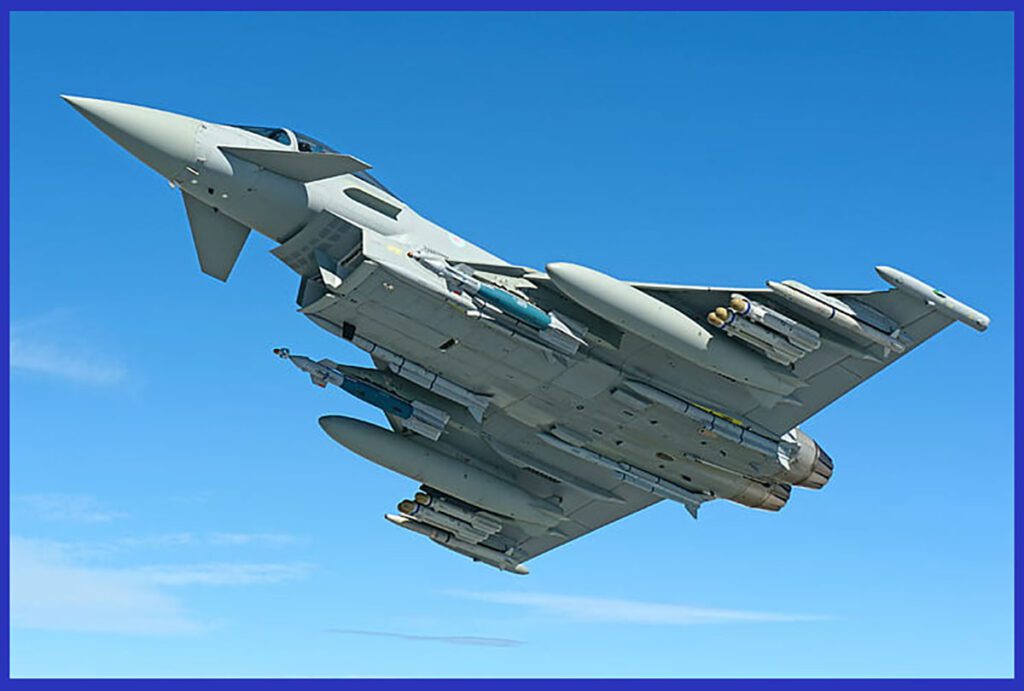
Low Radar Cross-Section (RCS): While not classified as a traditional stealth aircraft, the Eurofighter Typhoon incorporates specific design features aimed at reducing its radar cross-section, thereby enhancing its survivability in contested environments, particularly when viewed from the frontal aspect.
An illustrative example of these design measures is the positioning of the jet inlets, which effectively conceal the front of the engines—a typically strong radar target.

Additionally, critical potential radar targets, such as the leading edges of the wing, canard, and fin, are designed with a high degree of sweep, redirecting radar energy away from the frontal aspect.
Furthermore, certain external weapons are semi-recessed into the aircraft, providing partial shielding from incoming radar waves. Examples include the Meteor AAMs integrated into the edges of the fuselage areas.

PIRATE IRST system: Another strategy employed to reduce the likelihood of detection involves the use of passive sensors, specifically the PIRATE IRST system, which minimizes the emission of potentially revealing electronic signals.
Positioned on the port side forward of the windscreen, the Passive Infra-Red Airborne Track Equipment (PIRATE) system functions as an infrared search and track (IRST) system. When employed in an air-to-air role alongside the radar, PIRATE operates as an infrared search and track system, enabling passive target detection and tracking.
The system is capable of detecting temperature variations over long distances and is integrated with the pilot’s helmet-mounted display.
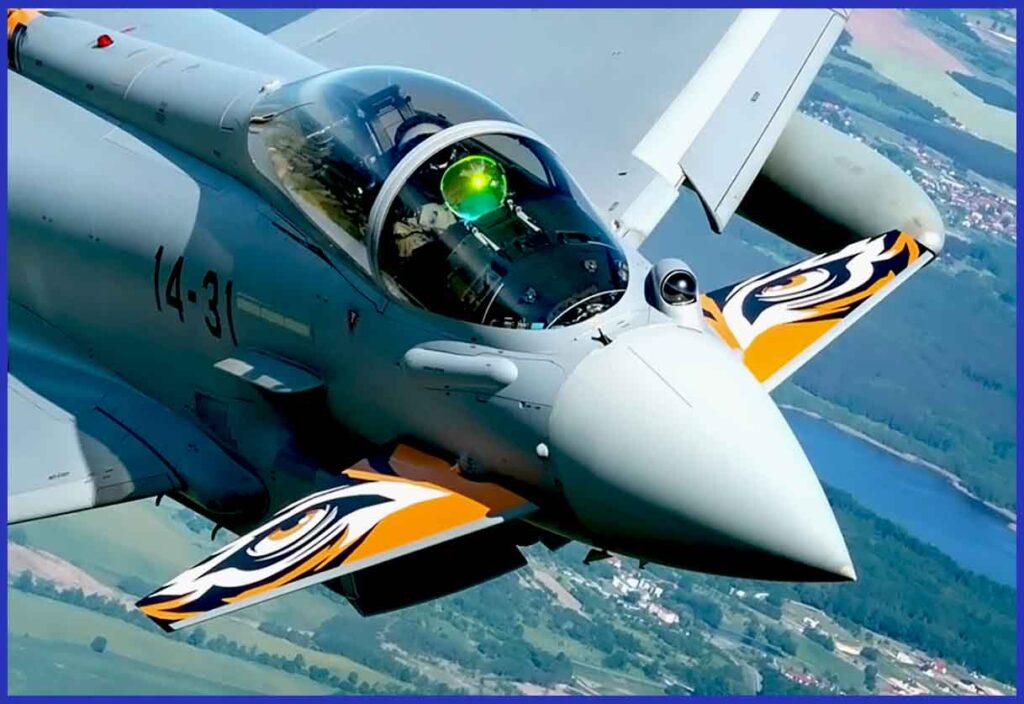
Upgrades of the Eurofighter Typhoon as of 2023
The Eurofighter Typhoon has seen a series of upgrades and enhancements throughout its existence, ensuring its continued status as a state-of-the-art multirole fighter aircraft.
These upgrades have been primarily directed at enhancing its avionics, weapon systems, and overall capabilities. The production of the Eurofighter has occurred in multiple tranches, each tranche featuring improvements and upgrades compared to its predecessor.

The initial production model was Tranche 1, followed by Tranche 2 and Tranche 3 variants, each incorporating advancements in technology, avionics, and software.
In November 2020, the German government sanctioned an order for 38 Tranche 4 aircraft, equipped with ground attack capabilities, to replace the Tranche 1 units currently in service in Germany.
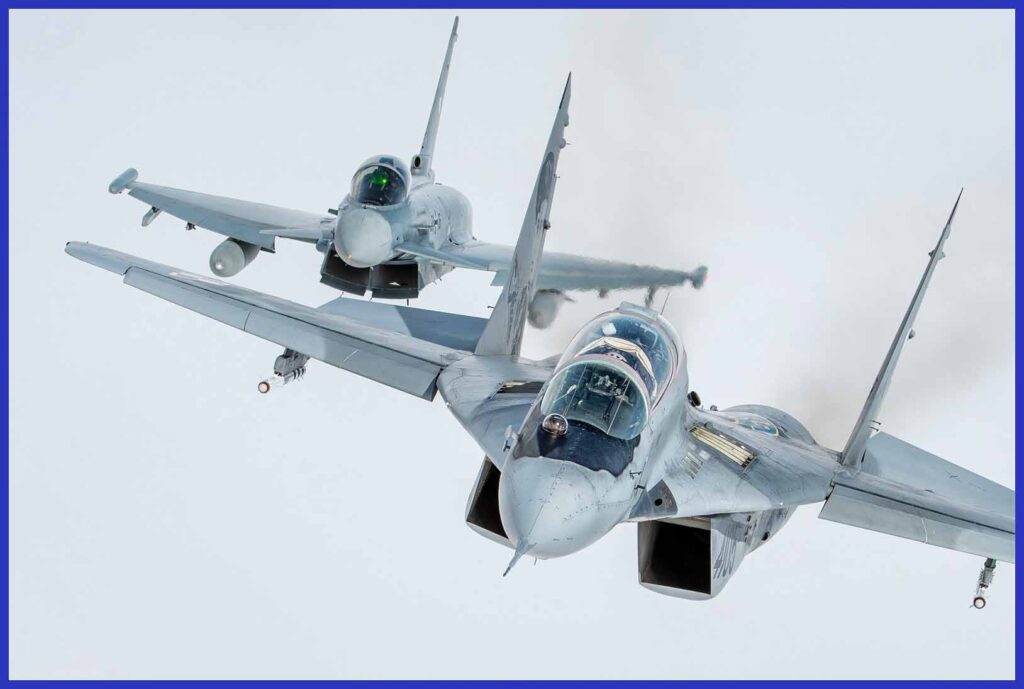
The Eurofighter Typhoon has undergone extensive weapon integration enhancements, expanding its capability to deploy a broader range of air-to-air and air-to-ground munitions. These advancements encompass precision-guided munitions and the capacity to carry long-range air-to-air missiles.
Furthermore, upgrades to the electronic warfare systems have bolstered the aircraft’s survivability by augmenting its ability to detect and counter threats emanating from hostile radar systems and missiles.

Significant efforts have been dedicated to increasing the aircraft’s operational range and payload capacity, allowing it to carry more fuel and munitions for extended missions. In April 2014, BAE announced new wind tunnel tests aimed at assessing the aerodynamic characteristics of conformal fuel tanks (CFTs).
These CFTs, compatible with any Tranche 3 aircraft, can each carry 1,500 litres of fuel, resulting in a 25% increase in the Typhoon’s combat radius to 1,500 nautical miles (2,778 km).
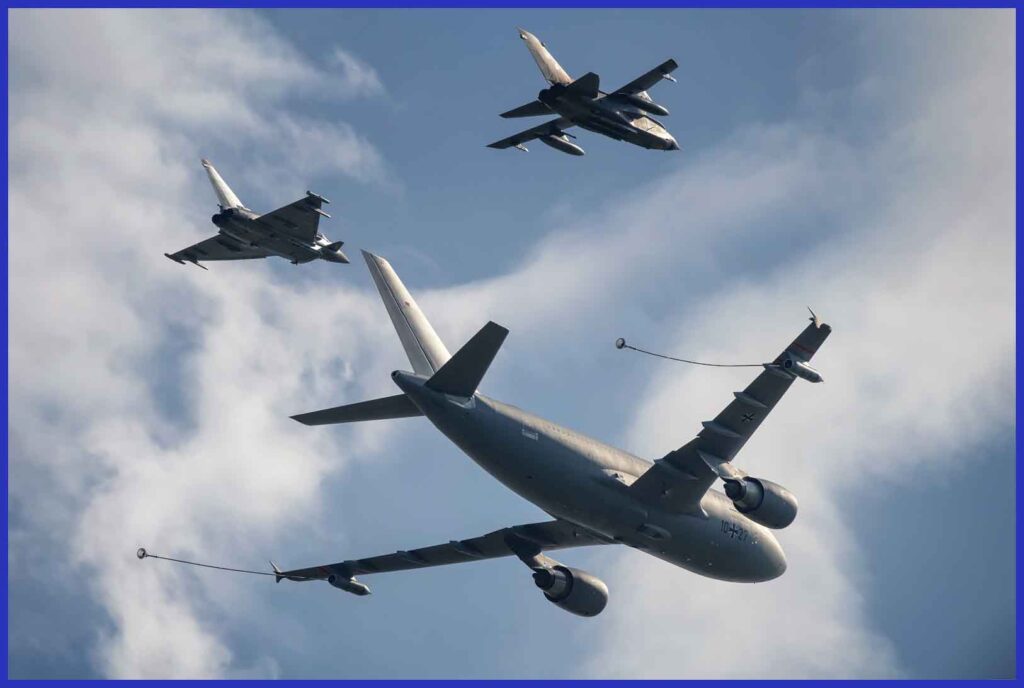
Eurofighter Typhoon Technical Specifications
- Crew: Single or two-seater
- Length: 52 ft 4 in ( 15.96 m )
- Height: 17 ft 4 in ( 5.28 m )
- Wingspan: 35 ft 11 in ( 10.95 m )
- Wing Area: 551 sq ft ( 51.2 m2 )
- Powerplant: 2 × Eurojet EJ200 afterburning turbofan engines, providing 60 kN (13,000 lbf) of thrust each in dry mode and 90 kN (20,000 lbf) with afterburner
- Empty Weights: 11,000 kg ( 24,251 lb )
- Gross weight: 16,000 kg ( 35,274 lb )
- Max takeoff weight: 23,500 kg (51,809 lb)
- Fuel capacity: 4,996 kg ( 11,010 lb )
- Maximum Weapon Load: 9,000 kg ( 19,800 lb ) of payload
- Maximum speed: 2,125 km/h ( 1,320 mph ) Mach 2.0 Max Speed At Altitude and 1,530 km/h ( 950 mph ) Mach 1.25 Max Speed At Sea Level / Supercruise speed: Mach 1.5

- Maximum combat radius: 1,389 km (863 mi, 750 nmi) air defence loiter / ground attack, hi-lo-hi (with 3 × external 1,000-litre tanks) / 185 km (100 nmi; 115 mi) short-range (scramble) air defence with 3-hr combat air patrol (with 3 × external 1,000-litre tanks) / 601 km (325 nmi; 373 mi) ground attack, lo-lo-lo (with 3 × external 1,000-litre tanks)
- Ferry range: 3,790 km ( 2,350 mi, 2,050 nmi ) with 3 × drop tanks ( Tranche 3 variants )
- Service ceiling: 65,000 ft ( 19,812 m )
- g limits: +9 / –3
- Rate of climb: 315 m/s
- Armament_ Guns: The Eurofighter Typhoon is equipped with one 27 mm Mauser BK-27 revolver cannon loaded with 150 rounds.
- Hardpoints: The aircraft features a total of 13 hardpoints, consisting of 8 under-wing and 5 under-fuselage pylon stations. These hardpoints have the capability to carry a payload exceeding 9,000 kg (19,800 lb) for multi-role configurations. The available combinations encompass a variety of weapons, including AMRAAM, ASRAAM, Meteor, IRIS-T, and Sidewinder air-to-air missiles.
- For air-to-surface missions, it can carry Storm Shadow/Scalp EG, HARM, Maverick, Brimstone, Taurus, and the upcoming SPEAR 3. Anti-ship capabilities are provided by Marte ER and JSM missiles. Additionally, the Eurofighter Typhoon can be armed with Paveway LGBs, SDB, JDAM, and Spice 250 Bombs. These armament options are all designed for delivery as of 2023.

Alongside this article, seize the exclusive opportunity to acquire a 1/72 scale premium diecast model of a Eurofighter Typhoon FGR4, Multirole Combat Fighter.
These extraordinary and renowned military aircraft, celebrated as the pinnacle of advanced and sophisticated fighter planes, are currently available for purchase through AirModels with global delivery options. Act promptly to secure these exceptional models before the limited stock is depleted.
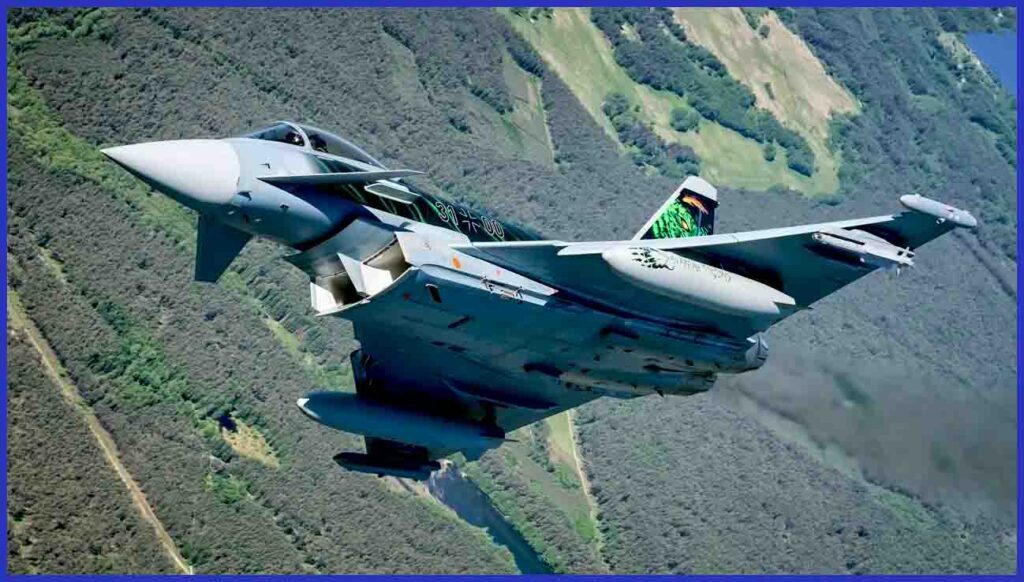
In conclusion, the Eurofighter Typhoon stands as a testament to the collaborative efforts of European nations in creating high-performance multirole fighter aircraft. Its design, characterized by advanced aerodynamics, cutting-edge avionics, and continuous upgrades, reflects a commitment to excellence in aerospace technology.
Through its various tranches and ongoing enhancements, the Eurofighter Typhoon has evolved into a versatile and capable platform, capable of excelling in air-to-air combat, ground attack missions, and beyond. Its adaptability, advanced radar systems, and human-machine interface empower pilots to navigate complex air combat scenarios with precision and confidence.
As the Eurofighter Typhoon continues to serve European and international air forces, it remains a formidable force in the world of modern aviation, symbolizing the power of international collaboration and the pursuit of innovation.
Its legacy is a testament to the dedication of those who have contributed to its development and the enduring commitment to maintaining its excellence in the ever-evolving landscape of aerial warfare.
